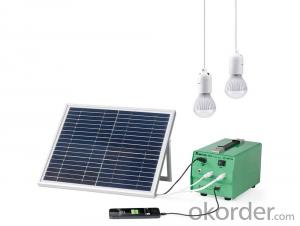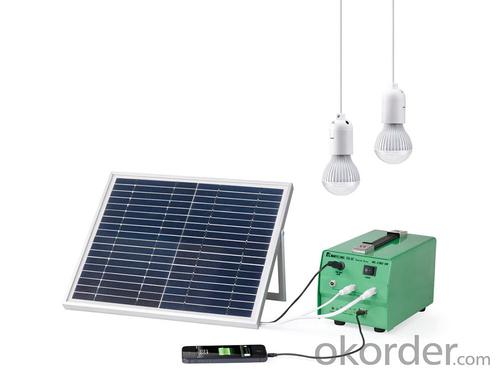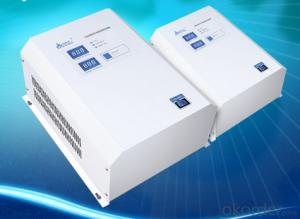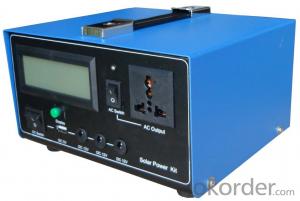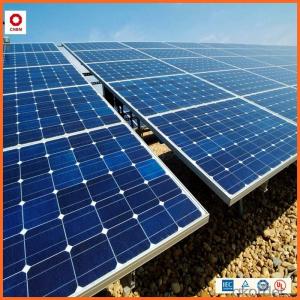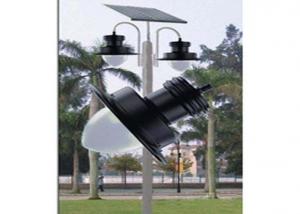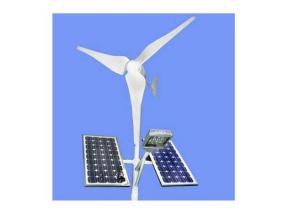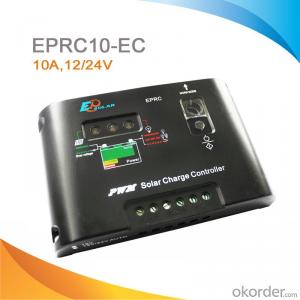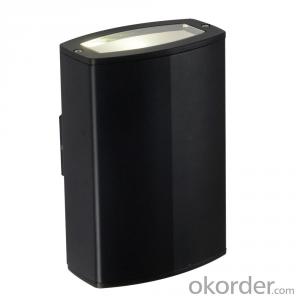Crest Solar Energy Systems - DC >10W Solar Lighting System
- Loading Port:
- Guangzhou
- Payment Terms:
- TT OR LC
- Min Order Qty:
- 50 set
- Supply Capability:
- 10000 set/month
OKorder Service Pledge
OKorder Financial Service
You Might Also Like
Features:
1.Solar panel : crystalline silicon 10W18V, efficiency>=16%;
2.Integrated power supply box :Built-in controller 3A12V and maintenance-free lead-acid battery 7AH12V;
3.LED lamp:3W12V,with 5M wires and switch, 2 sets;
4.Charing cable : 1 x USB cable 10-in-1;
5. Charging and using time: The empty battery could be full after charged 6hours. After the battery is full, 2 LED lamps could work 10hours;
6.Warranty: Panel 10 years; Battery 1 year; others 1 year.
| Item number | XT802A-10W |
| Solar panel | Poly crystalline 10W 18V |
| Battery | 7AH12V lead-acid battery |
| LED lamp | 3watt, >50000 hours |
| cable of led lamp | 5 m |
| Weight | 5.5kg/set |
| Output | DC 12V and DC 5V |
| Working Time @ full battery | 2 LED lamps totally using 10hours. |
| Warranty | 1 years |
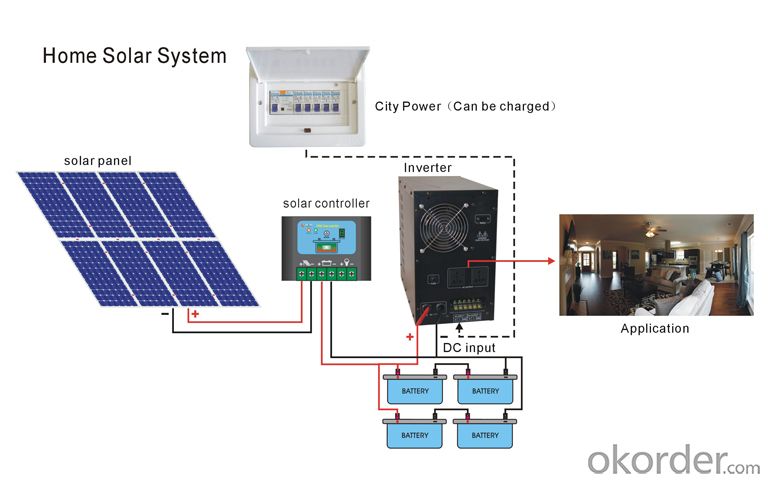
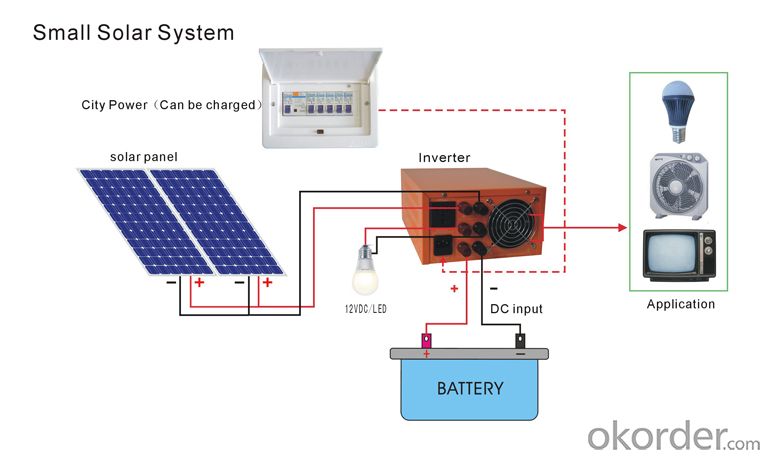
Quantuty
Quality goal:Constant innovation to meet the request of the customers. Protect the environment, provide environmental products to customer.
Quality strategy:
Quality: established high efficiency quality manager system in line with ISO9001 and ISO/TS16949.
Improvement: keeping improvement & quality guarantee.
Efficiency: delivery on time, complete the agreed events with the customers on time.
Service: focus on customers, provide the service and technology support on time.
FAQ
1. How long will my inquiry get response?
Your inquiry related to our products or prices will be replied within 24 hours.
2. Can I get professional service and suggestion?
Well-trained and experienced staffs to answer all your questions in fluent English.
3. Do you accept OEM or customized design?
OEM & ODM, any your customized lightings we can help you to design and put into product.
4. What if I need specific design?
Distributorship are offered for your unique design and some our current models.
- Q: What is the lifespan of solar energy inverters?
- Solar energy inverters can have varying lifespans due to factors such as the inverter's quality, usage, and maintenance. Generally, a solar energy inverter that is of high quality and properly maintained can last approximately 10 to 15 years. However, thanks to technological advancements and enhanced durability, certain inverters can endure for 20 years or even more. It is crucial to bear in mind that regular maintenance, including thorough cleaning and inspection, can assist in prolonging the inverter's lifespan. Furthermore, selecting a reputable brand and ensuring correct installation can also contribute to an extended lifespan for solar energy inverters.
- Q: Can solar energy systems be used for powering RVs?
- Yes, solar energy systems can be used for powering RVs. Solar panels can be installed on the roof of an RV to harness sunlight and convert it into electricity. This renewable energy source can power various appliances and systems in an RV, reducing the dependence on traditional fuel sources and providing a sustainable and cost-effective solution for mobile power needs.
- Q: Can solar energy systems be used for powering electric vehicle repair and maintenance facilities?
- Yes, solar energy systems can certainly be used for powering electric vehicle repair and maintenance facilities. Solar panels can be installed on the rooftops or around the premises of these facilities to harness and convert sunlight into electricity. This renewable energy source can then be used to power the equipment and machinery required for repair and maintenance work, as well as provide electricity for lighting and other facility needs. Utilizing solar energy not only reduces the carbon footprint of these facilities but also offers potential cost savings over time.
- Q: Can solar energy systems be used in areas with limited access to solar energy support networks?
- Yes, solar energy systems can still be used in areas with limited access to solar energy support networks. These systems can be designed with battery storage capabilities to store excess energy generated during peak sunlight hours and use it during times when there is limited or no sunlight. This allows for a more reliable and continuous supply of electricity, even in areas with limited solar energy support networks. Additionally, advancements in technology and decreasing costs of solar panels have made them more accessible, making it easier for remote areas to adopt solar energy systems.
- Q: Can solar energy systems be used for powering electric vehicle wireless charging systems?
- Yes, solar energy systems can indeed be used for powering electric vehicle wireless charging systems. The energy generated from solar panels can be converted into electricity and stored in batteries. This stored energy can then be utilized to power wireless charging stations for electric vehicles, providing a sustainable and renewable source of power for their charging needs.
- Q: Can solar energy systems be installed in urban areas with limited space?
- Solar energy systems can indeed be installed in urban areas with limited space. Despite the fact that urban areas often have limited rooftop space for solar panel installation, there are several creative solutions that can be used to overcome this challenge. One option is to install solar panels on vertical surfaces like walls or building facades. This approach makes the most of the available space and doesn't require additional land. By utilizing vertical space, solar energy systems can still generate a significant amount of electricity even in densely populated urban areas. Another solution is to implement community solar projects. These projects involve installing solar panels in a centralized location within the urban area, such as a parking lot or vacant lot. The electricity generated by these panels can then be shared among multiple buildings or households, allowing those with limited rooftop space to still benefit from solar energy. Furthermore, advancements in technology have resulted in the development of more efficient and compact solar panels. These panels can generate the same amount of electricity as traditional panels with less surface area, making them more suitable for installation in limited urban spaces. In addition to these solutions, it's important to consider the potential of integrating solar energy systems into existing infrastructure. For instance, solar panels can be installed on top of bus stops, streetlights, or even on the sides of bridges and highways. This allows for the utilization of spaces that would otherwise go unused. In conclusion, although limited space can be a challenge, there are various ways to install solar energy systems in urban areas. With innovative approaches and technological advancements, solar power can be harnessed even in densely populated cities, contributing to a more sustainable and renewable energy future.
- Q: Can solar energy systems be used for powering disaster relief efforts?
- Yes, solar energy systems can be used for powering disaster relief efforts. Solar energy provides a reliable and renewable source of power that can be harnessed even in remote locations or during grid outages. Solar panels can be quickly deployed to provide electricity for emergency medical services, communication systems, water purification, lighting, and other critical needs during disaster response and recovery efforts.
- Q: How much energy can a solar energy system generate?
- The amount of energy a solar energy system can generate depends on several factors, including the size and efficiency of the system, the location and climate conditions, and the amount of sunlight available. However, on average, a well-designed solar energy system can generate enough electricity to power a home or a building, and in some cases, even generate surplus energy that can be fed back into the grid.
- Q: How does the size of a solar energy system affect its performance?
- The size of a solar energy system directly impacts its performance. A larger system with more solar panels will be able to generate more electricity, resulting in higher energy production. Conversely, a smaller system will generate less energy. Additionally, a larger system can potentially offset a greater portion of a household's energy consumption, leading to more significant cost savings and environmental benefits.
- Q: I usually have to use about 10 degrees, more in the summer! Winter sunshine time 10 hours! Who knows how much a set price, what brand?
- Sold to the power supply bureau 0.45 yuan once, the state subsidy fee of $0.42, a year issued 3000 kwh.
Send your message to us
Crest Solar Energy Systems - DC >10W Solar Lighting System
- Loading Port:
- Guangzhou
- Payment Terms:
- TT OR LC
- Min Order Qty:
- 50 set
- Supply Capability:
- 10000 set/month
OKorder Service Pledge
OKorder Financial Service
Similar products
Hot products
Hot Searches
Related keywords
